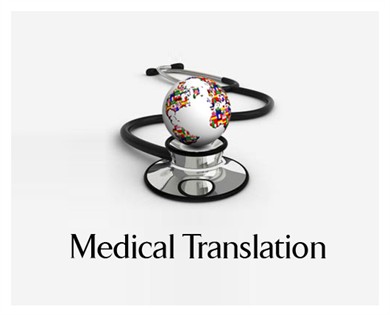Top Tips for Medical Translation
Medical translations can be of a clinical, regulatory and/or technical nature, ranging from manuals, instructions and directions for use, package inserts, legal disclaimers to clinical studies, research papers and patents. Regardless of the exact nature of the materials to be translated, medical translation must follow strict specifications and fulfill a myriad of regulatory requirements which can differ vastly from country-to-country.
Translation and localization services are performed for a multitude of disciplines, industries and subject matters but rarely are the stakes higher than with medical translation when it comes to accuracy and safety! The slightest mistake can have wide-ranging ramifications so knowing what to look for in a translation service provider and what questions to ask when selecting a translation partner to get the desired results, can make the difference between medical translation that is accurate and effective, and one that can have potentially dangerous consequences!
Here are some Top Tips for Medical Translations:
- Research, Research, Research: Identifying the right translation partner! Make sure your language vendor can provide proof of previous work, client references and resumes of the actual translators and editors that will be performing the medical translations. Linguists should have advanced degrees in the subject are they are translating into and be able to provide a list of relevant samples of work.

- Certifications and Notarizations: Your language provider should be able to certify and notarize your medical translations – a prerequisite for medical and pharmaceutical companies with global distribution.
- Identifying the right GST (Global Services Team): Your team should be comprised of a lead project manager (ideally someone that speaks the language and understands the culture as it is important to have a point of contact that will provide a high comfort level for in-country reviewers as they do prefer to communicate in their native language) and a linguistic team that is comprised of subject matter experts and has an assigned language lead that can address any linguistic queries directly with the end client and/or in-country reviewer(s).
- Glossary Development: All good translation starts with a good foundation, such as a master glossary in all languages that translation will be required. Medical translation in particular lends itself to the development of a master glossary that lists items such as brand and product names, key medical terms and other relevant terminology that will be necessary for future translation.
- Legal and Regulatory Requirements: Before embarking on translation all legal and regulatory requirements need to be addressed and resolved in order to avoid delays and problems down the line.
- Translation Memory (TM): Medical translation is very well suited for the utilization of translation memory tools as it usually contains large amounts of repetitive phrases and concepts. TM provides the benefit of leveraging previously translated content, increase translation consistency and accuracy, and reduces overall cost and turnaround times.
- Client Review and Approval:
Client review and feedback is an integral part of the overall localization process. It is a Localization Best Practices task for sure. Of course translations received from your language partner should be error-free, grammatically correct translations of high overall quality, but even the best translation does not and cannot replace a solid client review step. There may be stylistic and preferential nuances that can only be incorporated successfully upon review of the localized content by the end client/end user. Any organization that requires medical translation needs to consider this step in the process. Without a solid client review and approval process you are missing out on the opportunity to get valuable feedback from in-country resources who may know their specific in-country requirements better than anyone else.
Medical translations don’t just require a specific skill set from the actual linguists that perform the translations but also need to be managed by a provider who understands the importance of adhering to Best Practices, following rigorous and well-documented Quality Control processes and procedures, and a team that can provide not just the linguistic expertise and capabilities but any additional services that may be required. These services range from multilingual desktop publishing, Online QA and Software Validation, to engineering and overall technical support. Following the tips outlined above will help identify the right resources, deliver high-quality output and minimize the risks.
Medical Translation Case Study
Review the exciting medical translation case study, which highlights a breakthrough solution for multilingual DTP projects using FrameMaker. This work was developed by Globalization Partners International (GPI) for a Major Medical Device Manufacturer. You may also download the PDF here: GPI Case Study.
